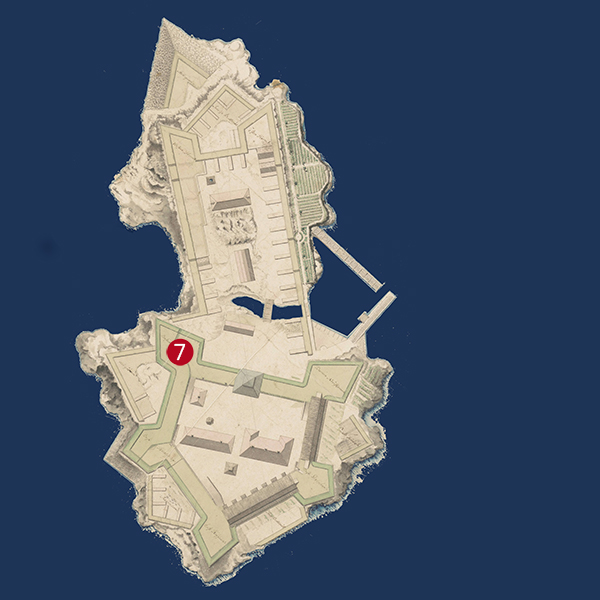
The hospital was built between 1774 and 1776, with separate sections for officers and prisoners. The art of medicine is not yet advanced, hence why bleedings are stopped by burning the wound and pain is dulled by giving the patients opium and or alcohol. On the 8th of August 1842 it’s decided that all sick prisoners from fortresses all over the country are to be brought to Nya Älvsborg for treatment. Nya Älvsborg is thereby practically a hospital slash home for elderly prisoners. However, it doesn’t stay that way for long. On the 10th of October 1866, 77 out of 78 prisoners are transported to the prison in Karlskrona. The one remaining prisoner has been at Nya Älvsborg for 48 years, imprisoned because of theft from the church, and is left behind for humanitarian reasons. Unfortunately, he only gets to enjoy his newfound freedom for a few days before he passes away.
The adjacent island, Stora Aspholmen, is used as a cemetery, the first burial recorded on the 23rd of February 1690. Only in exceptions, or if the deceased were of higher rank, were the bodies sent to Gothenburg for burial. The cemetery at Stora Aspholmen is mainly used to bury prisoners, but also people of lower rank in the garrison. In the 1700s there was also a herring saltwork on Stora Aspholmen.